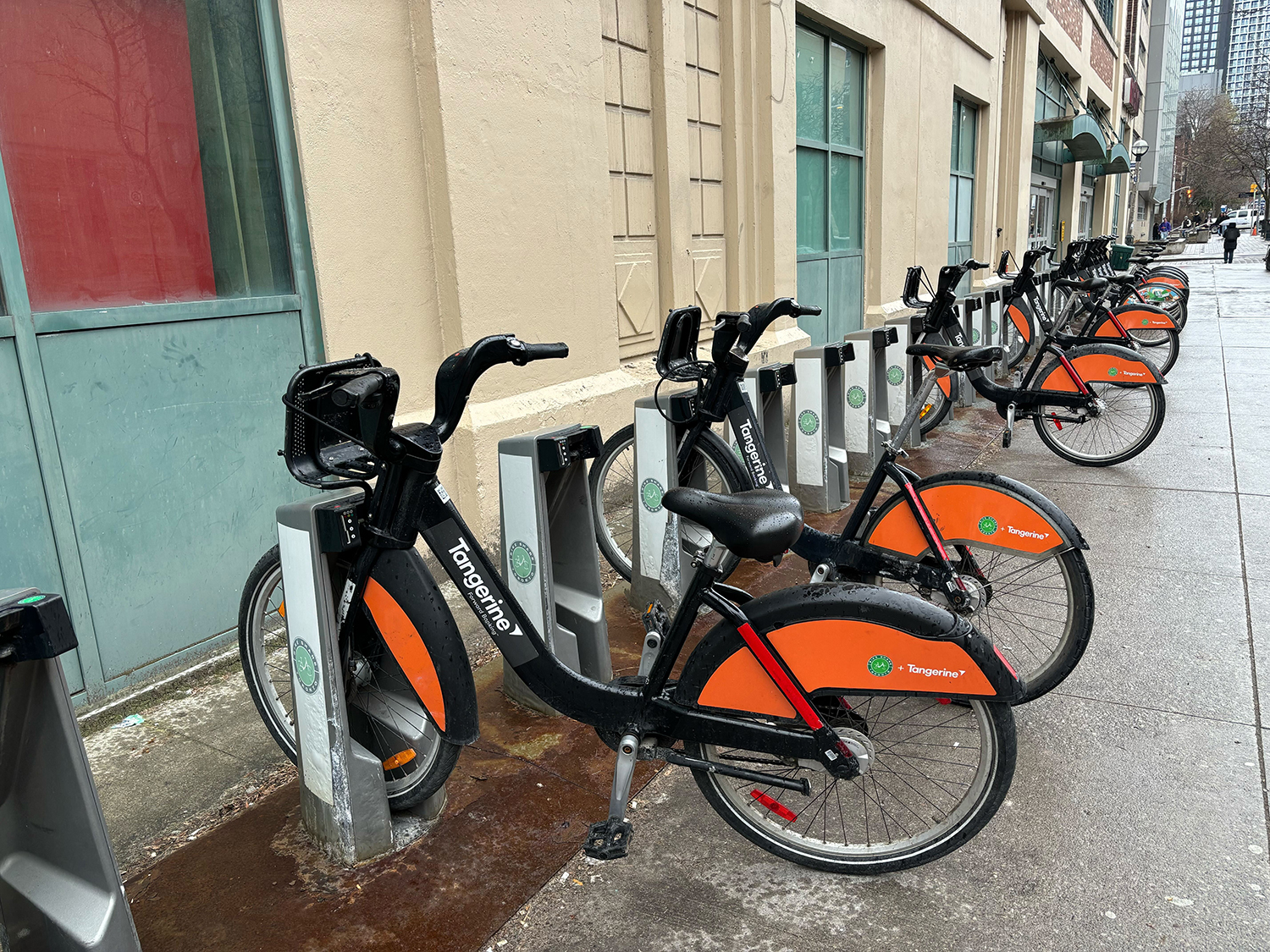
Listen to the full story here:
Bike Share Toronto announced in March that they will have officially launched in every ward of the City of Toronto by the end of this year. The popular bike rental program began in 2011, and has expanded throughout the downtown core as well as other parts of the city, including Etobicoke, North York and Scarborough.
Although the news is welcomed by Toronto residents, many cyclists and advocates worry whether the city’s infrastructure can support those who use the program.
According to a University of Toronto study, the Bike Share program has grown rapidly over the past decade; over 4.5 million trips were made using the program back in 2022.
Devina Kiscoskiw is one of many Torontotians who uses the bike share program, and says that in recent years cycling downtown has improved. However other parts of the city do not seem to be as safe.
“For many years I used to think that the downtown core was a horrible place to cycle. However, ever since the city has installed better safety measures such as plastic and cement guards, as well as making bike lanes more visible to drivers with brighter pavement color, it really does make a difference,” said Kiscoskiw. “That being said, I would not recommend cycling from somewhere like North York to the downtown core; there are such limited bike lanes; it seems so dangerous.”
The study also indicated that Bike Share grew dramatically. As of March 2023, there are 659 stations.
A 2019 Nanos research study created in partnership with the City of Toronto reported that safety was a top priority among respondents; with the majority of them agreeing that infrastructure needed to be more safer in order for them to use cycling as a method of transportation.
That being said, cyclists like Sukhvir Atwal say residents downtown have an advantage compared to Torontoians who live in other areas of the city.
“Living downtown there are bike lanes everywhere you look. However, cyclists like myself who want to commute to work or school from places like Scarborough have to ride alongside drivers because there are such limited bike lanes. I don’t find it safe and avoid riding my bike sometimes. I wish the city would create better infrastructure for those like myself who are not in the downtown area,” said Atwal.
Albert Koehl, a cycling advocate and environmental lawyer who co-founded the organization Bells on Bloor, agrees that the city lacks instructure and safety for cyclists.
Koehl says the idea of having access to programs like BikeShare is a great idea, however having these stations in areas of the city where there are little to no bike lanes creates an issue for those who want to cycle.
“Cycling infrastructure has definitely improved, however it needs to keep up with the growing number of cyclists. Huge portions of the city have no bike lanes such as north of Saint Claire Avenue,” said Koehl.
According to the Toronto Police Service, in 2022 91.9 per cent of cyclists who were involved in a collision had major injuries, and 8.1 per cent were fatal.
Koehl says the city needs to streamline the work as well as expand to every part of the city and not just focus on the downtown core.
City of Toronto staff did not respond to On The Record’s request for comment.
“Cyclists ride for a purpose, just like driving a car is a method of transportation. However, it’s a combined system, walk, cycle, and transit. The city is always changing, and the infrastructure needs to support the change,” said Koehl.
Last summer, city officials announced five new projects that will create bike lanes across the city. These areas include: Bloor Street West, Bartlett-Havelock-Gladstone, Cabbagetown, Sheppard Avenue East and Superior Avenue.
Steven Buttar is a fourth year journalism student at Toronto Metropolitan University. He is working with On The Record for his last semester of journalism school.

